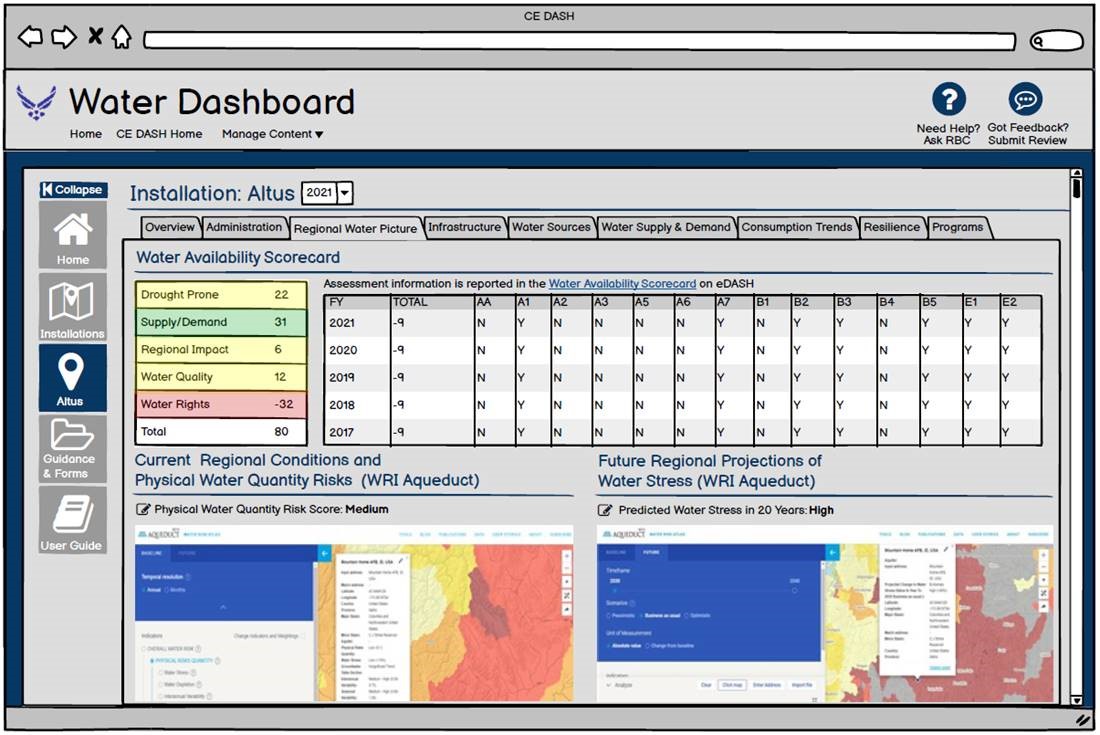Department of the Air Force (DAF) energy and water projects are transforming the ways in which we use energy and water at installations. To ensure a reliable, ready, and resilient supply continues, the DAF Installation Energy Program is integrating energy and water considerations across the enterprise by focusing on the following initiatives:
Microreactor Pilot

Oklo Inc. has been issued a Notice of Intent to Award for the Department of the Air Force Microreactor Pilot. This image of a microreactor facility is an artist’s conceptual design only. Image Credit: Oklo Inc.
The Department of the Air Force, in coordination with the Defense Logistics Agency (DLA) Energy Office, reached a critical milestone in piloting advanced nuclear energy technology with the issuance of a Notice of Intent to Award (NOITA) to Oklo Inc. on May 30, 2025.
If ultimately awarded the contract, the offeror would be required to site, develop, and operate a licensed microreactor facility at a DAF installation selected for site exploration. Eielson Air Force Base, in Fairbanks, Alaska, is the DAF’s preferred location for the pilot, and the DAF and Nuclear Regulatory Commission (NRC) are preparing an environmental analysis for the project as a next step. This initiative marks a potentially groundbreaking advancement for U.S. energy security, pioneering the first deployment of a commercial microreactor for the Department of Defense.
For more information on the DAF Microreactor Pilot, or learn more about microreactors, please visit https://www.eielson.af.mil/microreactor/ or contact us with specific questions or concerns at SAF.IEE.microreactorpilot@us.af.mil
For additional information on the NOITA announcement, please visit (Microreactor pilot reaches major project milestone > Air Force > Article Display).
Energy-As-A-Service
The DAF is leading the way within the federal government to adopt and integrate a commercial Energy-as-a-Service (EaaS) business model aimed at delivering reliable and resilient energy to installation mission owners more cost effectively than is done through current DAF energy management and procurement approaches. EaaS gives customers access to energy management services without upfront costs to provide resilient, efficient, and cost-effective energy that will benefit an installation.
In 2023, the DAF kicked off this effort with award of an EaaS agreement at Hanscom Air Force Base. The $10 million next-generation energy performance contract is a three-year Other Transaction Prototype Agreement (OTP) contract that includes an initial design-build period, followed by an operational period of at least 12 months, concluding with an evaluation and reporting period. Leveraging the OTP acquisition instrument will allow the Air Force to scale up more efficiently should the pilot project be deemed successful.
Read more about this effort here.

EaaS utilizes one industry partner to manage, operate and invest in the energy portfolio at an installation.
Installation Energy Plans
With the increased prevalence of large-scale natural disasters and the recognized threat of physical and cyber-attacks on our utilities, coordinating installation planning for energy and water resilience has never been more important. To address these threats, the DAF is developing IEPs to employ strategies to improve installation energy and water resilience. By planning for the future, we are better equipped to identify and execute energy and water projects to achieve mission assurance.
Learn additional information about Air Force Installation Energy Plans.
Mission Assurance
The operating environment is becoming ever more networked and dependent on enabling systems like energy and water. Whether physical or cyber, disruptions to these enabling systems pose a risk to mission operations because of the potential for unknown or under-analyzed impacts of such an event in a global system-of-systems environment. Even at a single installation, balancing and responding to competing priorities during an energy, water or cyber denial of service is extremely difficult if not considered in advance. To help address these risks and support mission assurance, the SAF/IEE Installation Energy Program is working to identify, assess, test, and mitigate enabling system vulnerabilities under an overarching Mission Thread approach with includes the following initiatives:
- Crown Jewels Analysis (CJA) - Identifies on and off base systems and assets whose failure can cause mission impact if a service such as energy or water is denied.
- Energy Resilience Readiness Exercise (ERRE) - An Office of the Secretary of Defense-mandate to determine how mission-critical energy needs are met during a base-wide loss of commercial electricity.
Water Resources Management
From training to operations and facilities, water is a critical input to accomplish DAF missions. As part of the Installation Energy portfolio, the water resources management program is shifting from managing water primarily based on conservation targets and quality monitoring toward a risk-based approach that more directly supports mission assurance. This will provide insights into vulnerabilities and potential impacts to mission at installations and enterprise wide, empowering decision makers to invest in resilience and manage water more effectively.
The water resources management program developed a Installation Water Dashboard to serve as a single interactive data repository. The Installation Water Dashboard is hosted on CE DASH and compiles all relevant water data in a single place to support installation resilience planning.

Learn additional information about Department of the Air Force Water Resources Management.